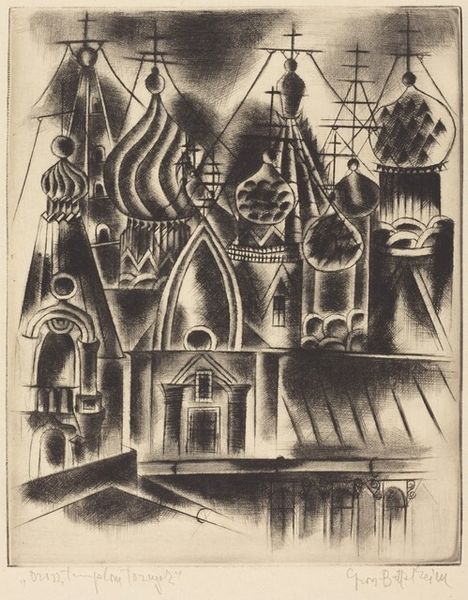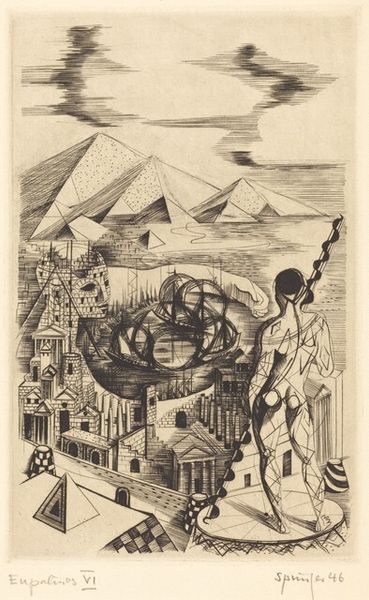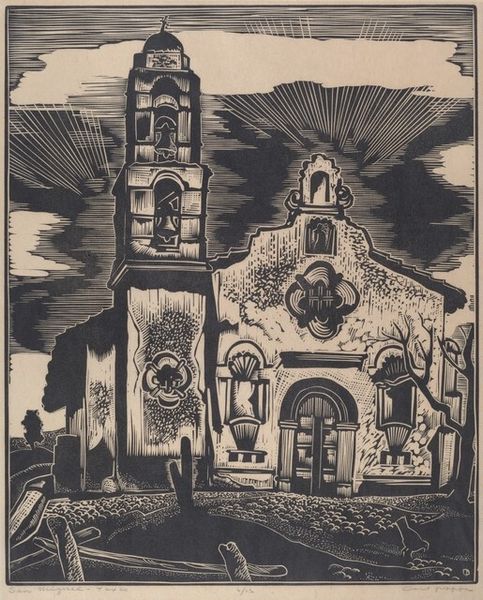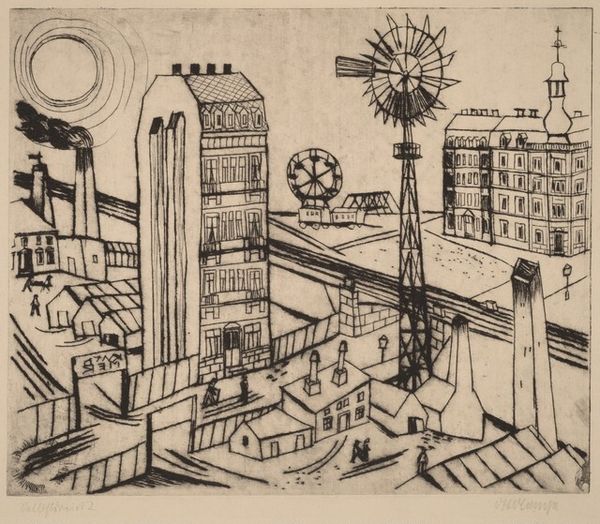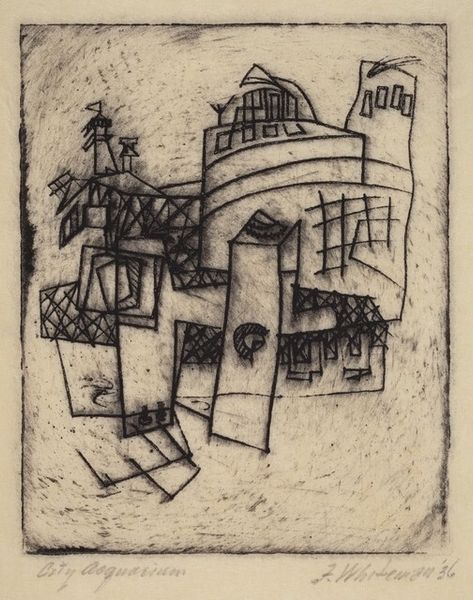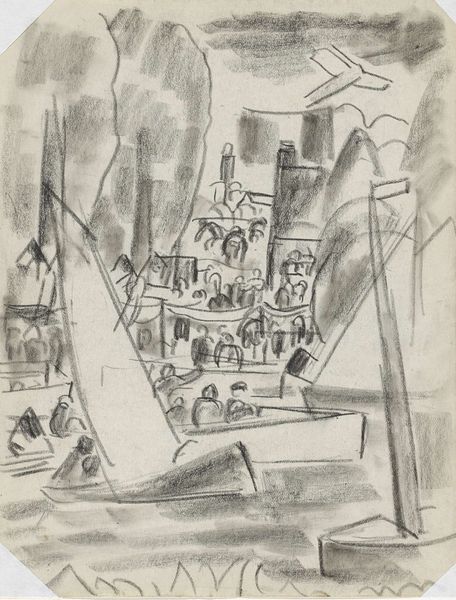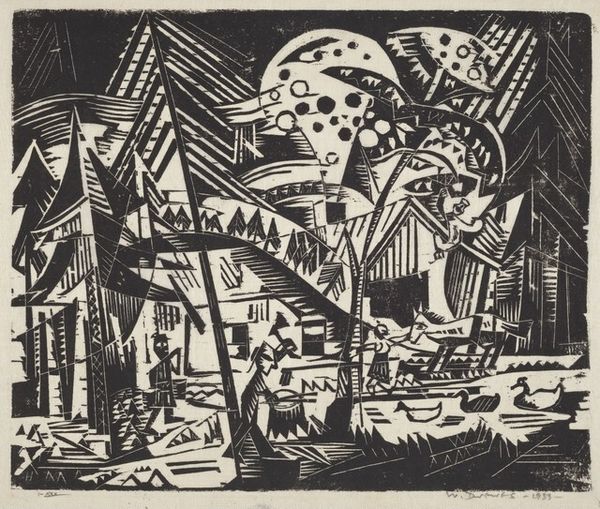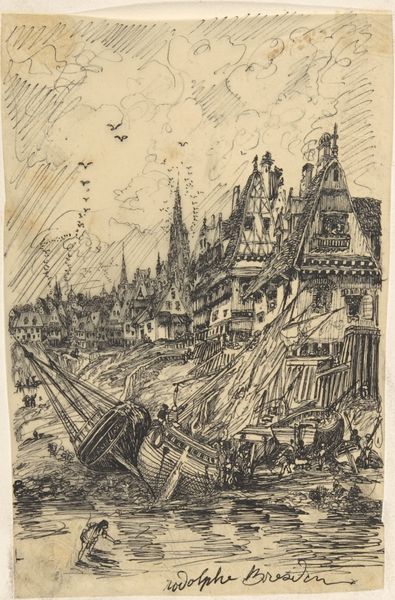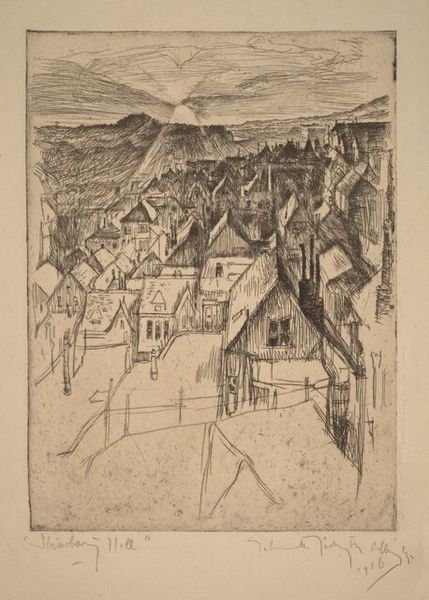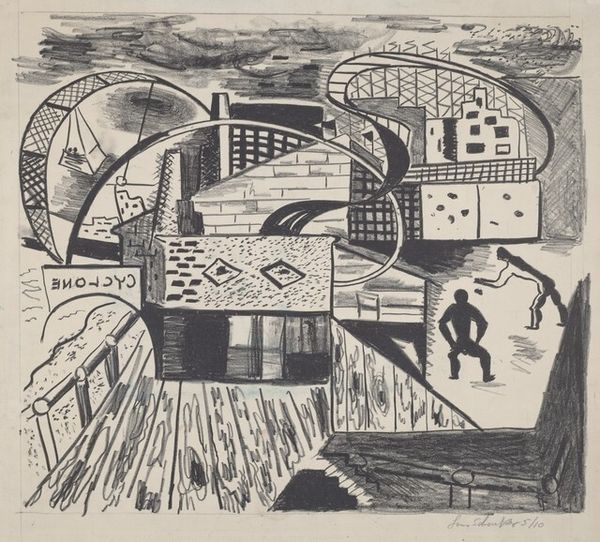
print, etching
# print
#
etching
#
abstraction
#
cityscape
Dimensions: image: 21.3 × 16 cm (8 3/8 × 6 5/16 in.) sheet (irregular): 32.4 × 28 cm (12 3/4 × 11 in.)
Copyright: National Gallery of Art: CC0 1.0
Curator: This is "The Avenue," an etching created in 1948 by Jacob Kainen. It’s a cityscape, though rendered with a distinctive abstract approach. What are your initial thoughts? Editor: There's an unsettling dreamlike quality to it. The cityscape feels both familiar and completely alien. The buildings teeter at odd angles and the ground seems unstable. Is it commentary or escapism? Curator: Perhaps both? Note the artist's masterful use of line. See how the density of hatching varies to create depth and shadow. The lines themselves are energetic, conveying a sense of restless movement. It makes the forms feel unstable and provisional. Editor: This piece was created shortly after the Second World War. Considering this historical context, that unstable ground you speak of feels representative of a population displaced and traumatized by conflict and grappling with radical political and social changes. Curator: An insightful reading! But even divorced from its context, the dynamism of the composition is striking. The geometry may imply modern architecture, but with an almost cubist breakdown, forms overlap and interlock in a very compelling way. Editor: Right. I see a city built on unresolved tensions—geopolitical anxiety translated into skewed lines and fragmented forms. The people look lost, like ghosts moving through an indifferent urban space. The stark monochrome adds to the sense of alienation. Curator: Note how the linear texture evokes the feeling of wind or rain. The eye is never still; Kainen creates a truly vibrant surface. The composition has movement and invites a lengthy contemplation. Editor: Considering Kainen's leftist leanings, I read the skewed perspective as a symbolic assault on systems of power. He calls into question traditional urban planning, capitalism, and other ideological forces responsible for these dystopic postwar conditions. The dream quickly dissolves into a nightmare. Curator: Regardless of one's political reading, Kainen uses line to build tension between form and formlessness. It allows the architecture to shift and vibrate. There's certainly much for viewers to reflect upon. Editor: Indeed. And reflecting upon those postwar anxieties will give each contemporary viewer space to contemplate how familiar or changed those feelings may or may not be, decades later.
Comments
No comments
Be the first to comment and join the conversation on the ultimate creative platform.
